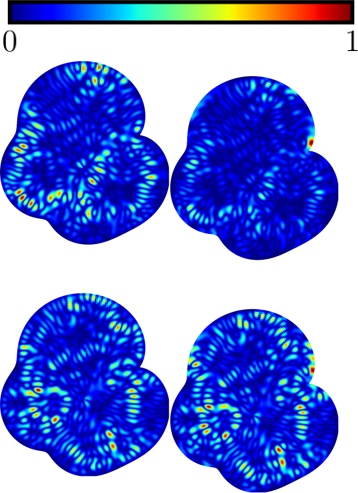주메뉴
- About IBS 연구원소개
-
Research Centers
연구단소개
- Research Outcomes
- Mathematics
- Physics
- Center for Underground Physics
- Center for Theoretical Physics of the Universe (Particle Theory and Cosmology Group)
- Center for Theoretical Physics of the Universe (Cosmology, Gravity and Astroparticle Physics Group)
- Dark Matter Axion Group
- Center for Artificial Low Dimensional Electronic Systems
- Center for Theoretical Physics of Complex Systems
- Center for Quantum Nanoscience
- Center for Exotic Nuclear Studies
- Center for Van der Waals Quantum Solids
- Center for Relativistic Laser Science
- Chemistry
- Life Sciences
- Earth Science
- Interdisciplinary
- Center for Neuroscience Imaging Research (Neuro Technology Group)
- Center for Neuroscience Imaging Research (Cognitive and Computational Neuroscience Group)
- Center for Algorithmic and Robotized Synthesis
- Center for Genome Engineering
- Center for Nanomedicine
- Center for Biomolecular and Cellular Structure
- Center for 2D Quantum Heterostructures
- Center for Quantum Conversion Research
- Institutes
- Korea Virus Research Institute
- News Center 뉴스 센터
- Career 인재초빙
- Living in Korea IBS School-UST
- IBS School 윤리경영


주메뉴
- About IBS
-
Research Centers
- Research Outcomes
- Mathematics
- Physics
- Center for Underground Physics
- Center for Theoretical Physics of the Universe (Particle Theory and Cosmology Group)
- Center for Theoretical Physics of the Universe (Cosmology, Gravity and Astroparticle Physics Group)
- Dark Matter Axion Group
- Center for Artificial Low Dimensional Electronic Systems
- Center for Theoretical Physics of Complex Systems
- Center for Quantum Nanoscience
- Center for Exotic Nuclear Studies
- Center for Van der Waals Quantum Solids
- Center for Relativistic Laser Science
- Chemistry
- Life Sciences
- Earth Science
- Interdisciplinary
- Center for Neuroscience Imaging Research (Neuro Technology Group)
- Center for Neuroscience Imaging Research (Cognitive and Computational Neuroscience Group)
- Center for Algorithmic and Robotized Synthesis
- Center for Genome Engineering
- Center for Nanomedicine
- Center for Biomolecular and Cellular Structure
- Center for 2D Quantum Heterostructures
- Center for Quantum Conversion Research
- Institutes
- Korea Virus Research Institute
- News Center
- Career
- Living in Korea
- IBS School
News Center
IBS Researchers Uncover Major Flaw in Popular Method for Modeling Quantum ChaosA new study from the Institute for Basic Science (IBS) in South Korea reveals that a widely used method in quantum physics may produce incorrect results when applied to certain high-energy systems. The findings could have significant implications for how physicists model and interpret quantum chaos — the unpredictable behavior of particles in confined systems. For decades, physicists have used "quantum billiards" as a model to explore how quantum particles behave inside a confined space, much like a billiard ball bouncing inside a table. These systems have been essential in the study of quantum chaos, with applications in areas like nanotechnology, quantum computing, and fundamental physics. In 1987, a new version of quantum billiards was proposed for relativistic particles — particles moving at speeds close to the speed of light — such as neutrinos. These so-called neutrino billiards follow different rules governed by the Dirac (or Weyl) equation. To simulate such systems, researchers developed various numerical methods, one of which is the conformal-map method (CMM), first applied to this context in a 2013 study published in Physical Review Letters. However, in the new paper, Dr. Barbara DIETZ and her team at IBS have proven mathematically that the CMM fails when applied to relativistic quantum billiards. Although the method appears to provide plausible results, it actually violates the fundamental equations that govern these systems — and, crucially, it fails to confine particles within the system boundary as required by physical laws. “This flaw in the method explains long-standing inconsistencies between CMM-generated results and the expected behavior of relativistic quantum systems,” Dr. Dietz explained. The work serves as a call for caution in using approximate methods in theoretical physics and emphasizes the importance of rigorous validation, especially when extending classical techniques to relativistic regimes. The study recommends using more reliable alternatives such as the boundary-integral method (BIM), which properly accounts for the mathematical and physical constraints of the system.
Notes for editors
- References
- Media Contact
- About the Institute for Basic Science (IBS) |
| before |
|---|
- Content Manager
- Public Relations Team : Yim Ji Yeob 042-878-8173
- Last Update 2023-11-28 14:20












